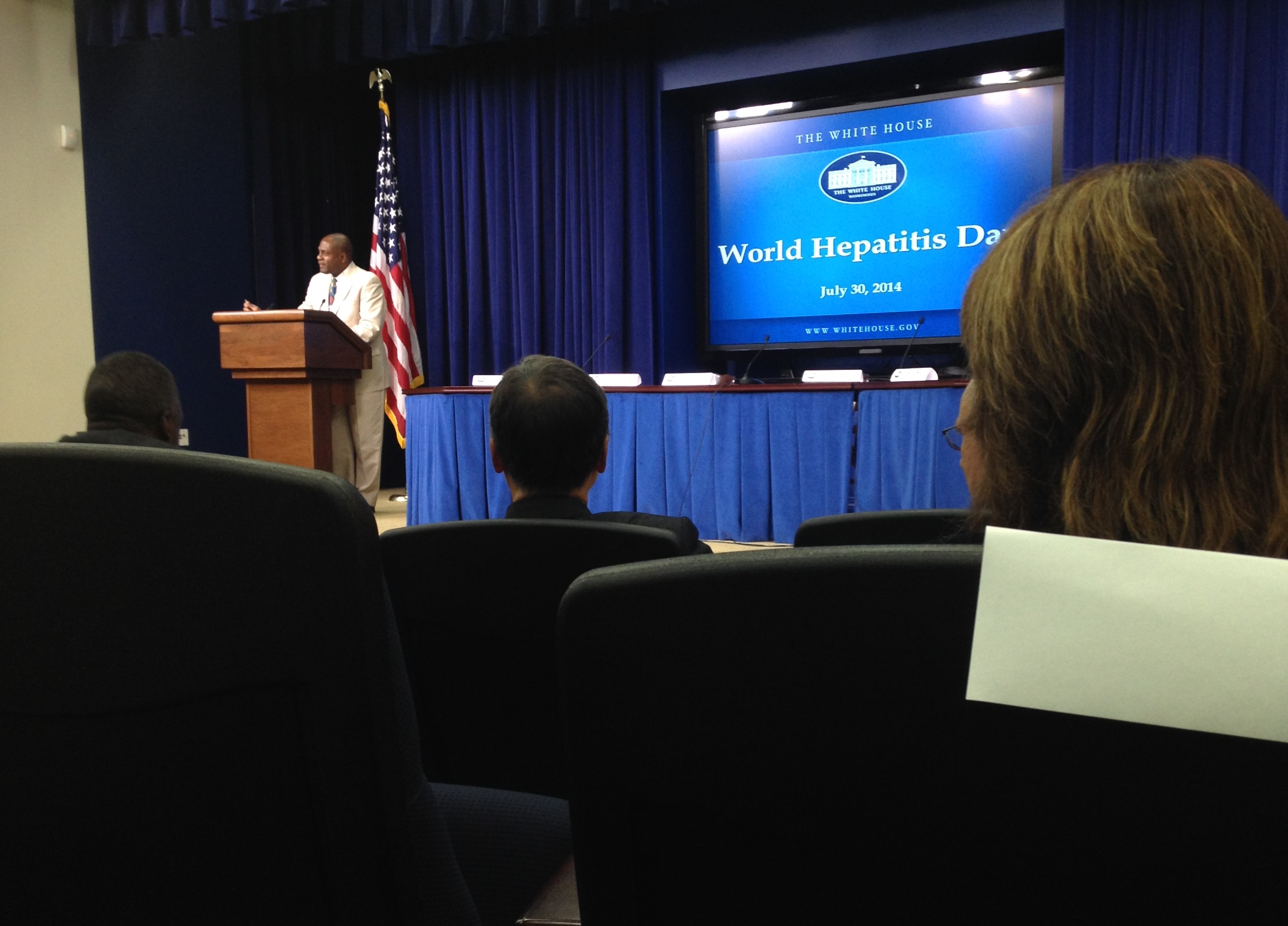 |
| Douglass Brooks |
On July 30th, 2014 the White House observed World Hepatitis Day in a private event held at the Eisenhower Executive Office Building. Leaders from the field gathered to commemorate the special occasion and honor those who have made notable contributions to the fight against this epidemic. After opening remarks from Douglas Brooks (Director, Office of National AIDS Policy), Christine Soyong Harley (Senior Policy Advisor, White House Initiative on Asian Americans and Pacific Islanders), and Representative Mike Honda (CA-17, Co-Chair, Congressional Hepatitis Caucus), several leaders in public health gave their perspectives regarding the current epidemic.
 |
| Eisenhower Executive Office Building |
In his last public appearance as the Assistant Secretary for Health, Dr. Howard Koh commented on the need to raise more awareness surrounding hepatitis, but praised the leaders and heroes who have given a "voice to this silent epidemic". Ambassador Deborah Birx (United States Global AIDS Coordinator) highlighted the successes of the PEPFAR program in combating the HIV epidemic around the world and explained how similar strategies can be applied to address hepatitis. As the number of HCV related deaths will soon surpass the number of HIV related deaths around the world, she spoke about the renewed sense of urgency to eradicate viral hepatitis. Dr. Paul Farmer (Partners in Health) echoed this sense of urgency while recounting the early days of the HIV epidemic. He recalled that community based care was integral to improving conditions for the most under-resourced populations and emphasized the need for similar public health oriented strategies when treating hepatitis.
 |
| Recognition of Service |
After these presentations, several individuals were recognized for their exemplary service in addressing viral hepatitis. Michael Botticelli (Acting Director, National Drug Control Policy) presented the awards to these individuals who represented advocacy groups, academia, foundations, and coalitions.
The program ended with a panel discussion moderated by Dr. Ronald Valdiserri (Deputy Assistant Secretary for Health, Infectious Diseases) on "Breaking the Silence and Leading the Way". The panelists included Dr. Jennifer Havens (University of Kentucky), Dr. Gottfried Hirnschall (World Health Organization), Michael Ninburg (Hepatitis Education Project), and Dr. Samuel So (Asian Liver Center). After giving brief remarks commenting on different facets of the worldwide epidemic, the panel addressed questions from the audience. The discussion primarily focused on developing strategies to combat stigma and misconception surrounding HCV and HBV, raising awareness for the issue, and addressing populations that are unequally affected by the epidemic. In
 |
| Panel Discussion |
the United States, more than 75 percent of adults living with HCV were born between 1945 and 1965. African Americans are at a higher risk for HCV infection than other ethnic groups, and more than 50 percent of Americans living with HBV are Asian Americans and Pacific Islanders. In correctional facilities, the prevalence of HCV is more than 10 times the prevalence of HCV in the general US population.
The viral hepatitis epidemic affects more of the world's population than HIV; however the former often fades to the background of public agenda. As Douglas Brooks closed the ceremony, he called for more collaboration from those working in the HIV and hepatitis fields. Affecting similar demographics and with similar modes of transmission, the two fields stand to benefit from working together towards a common, mission for better public health.

This e-mail address is being protected from spambots. You need JavaScript enabled to view it is currently pursuing a B.A. in Human Evolutionary Biology with a foreign language citation in Spanish at Harvard University.
